The Georgia Sea Turtle Center on Jekyll Island
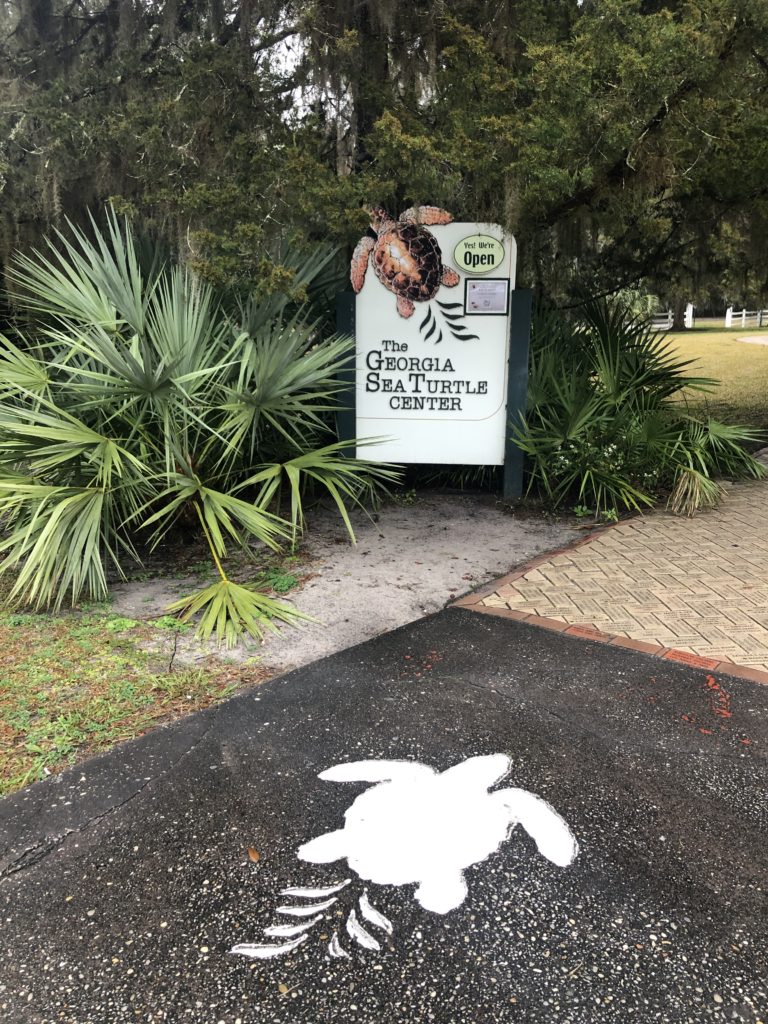
This trip has been full of surprises, but I’m not sure any delighted my children as much as telling them we’d be spending our morning with sea turtles at the Georgia Sea Turtle Center!
The Georgia Sea Turtle Center is located on Jekyll Island, about 15 miles off of I-95. This detour was definitely worth it!
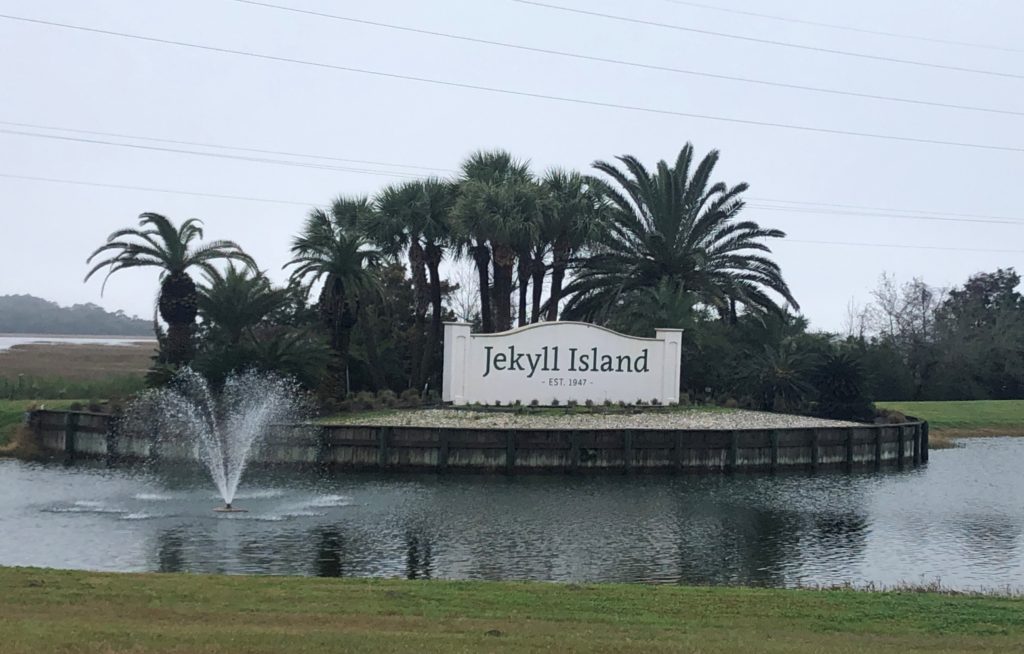
Jekyll Island
One of Georgia’s barrier islands, Jekyll Island is also a former state park. Now it is self-governed and charges a parking fee of $8.00 per day. This fee also grants visitors access to all of the island’s public areas.
The island boasts several beaches and beach parks, playgrounds, ponds, nature centers, and more. If you play golf, fish, or hike, Jekyll Island has you covered there, too! There are historic sites to explore, island tours, a casino, and, of course, the Georgia Sea Turtle Center.
We spent some time at Driftwood Beach, exploring the trees and rocks along the shore, but the real reason we came was for the sea turtles!
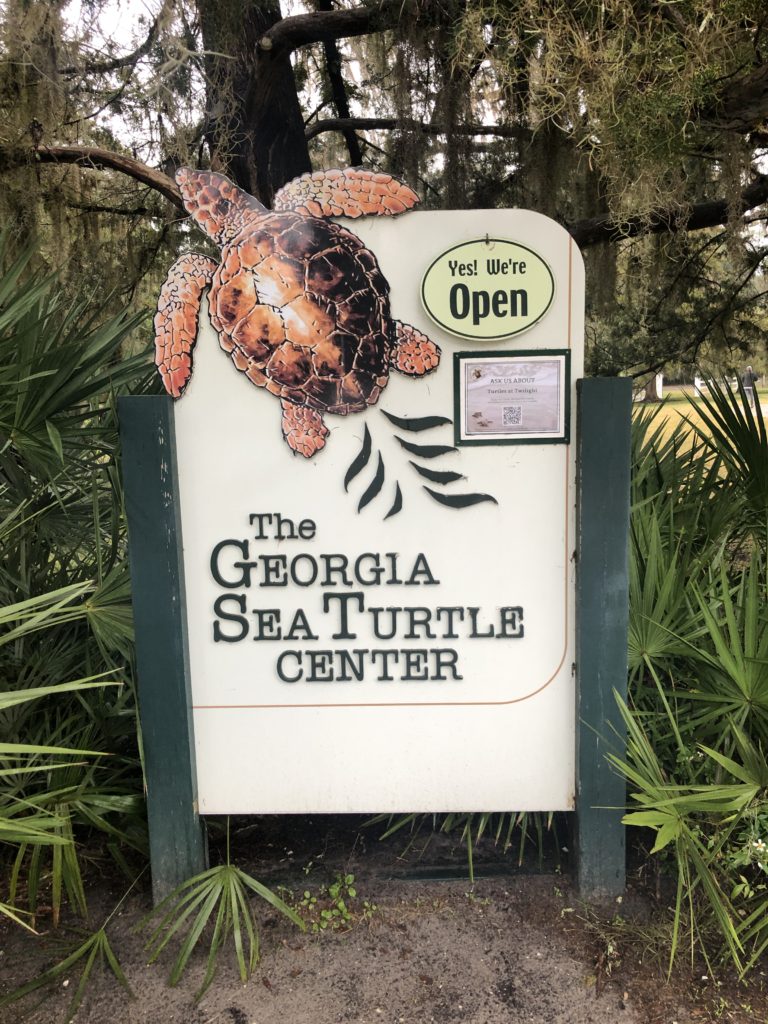
Georgia Sea Turtle Center
The Georgia Sea Turtle Center is an education and rehabilitation facility that is open to the public. Visitors can learn about sea turtles and see them in various stages of rehabilitation.
On the day of our visit, we arrived at opening time of 9:00AM. We were ready to see some turtles! They are my 5-year-old son’s favorite animal (at least, for now), but we all find them to be adorable, interesting creatures.
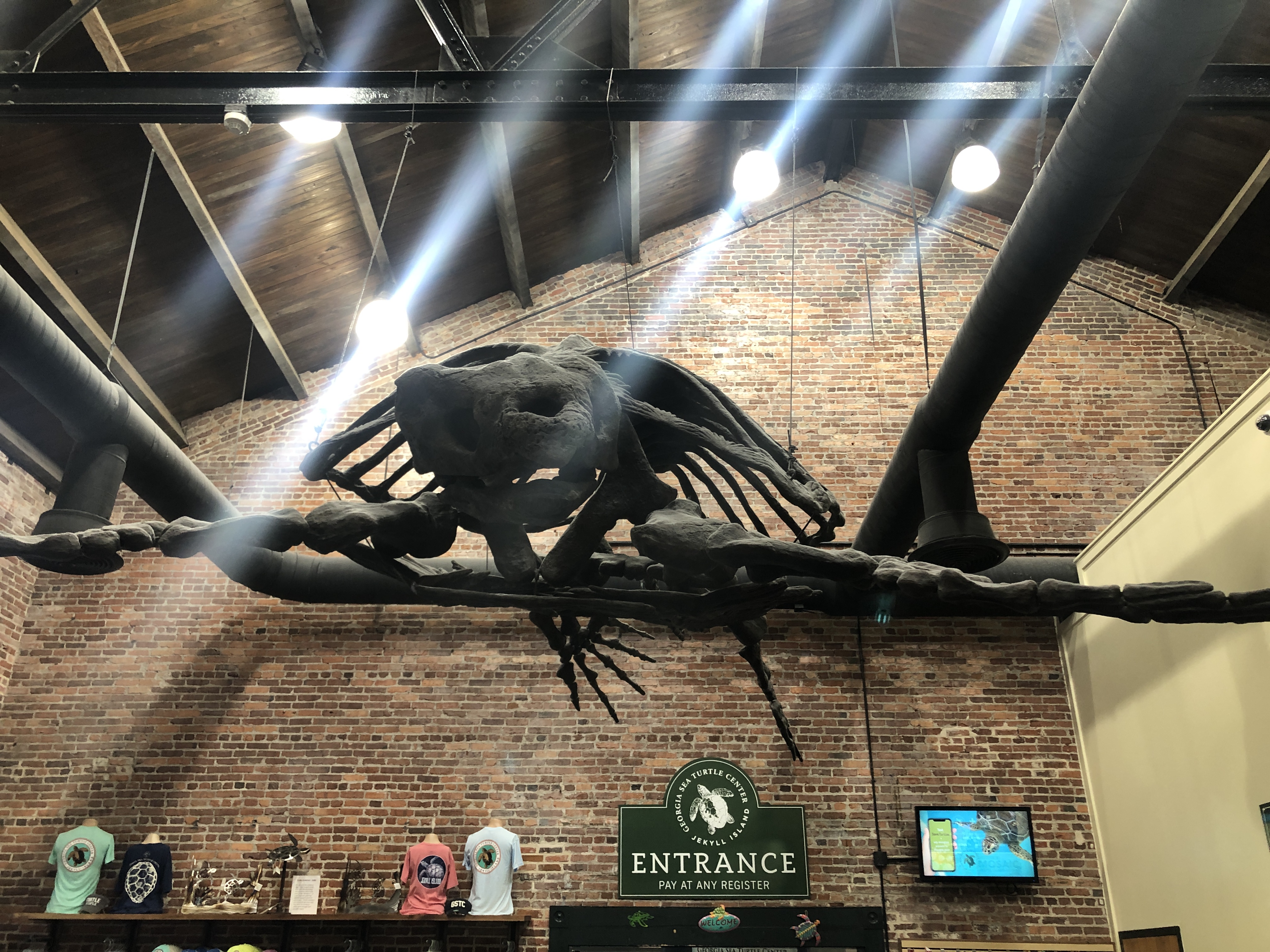
Tickets for the center were $7.49 per child and $9.63 per adult. We’d purchased ours online and were able to show proof of the purchase and head right in. The Learning Center, Treatment Room, and Hospital Pavilion were all open.
The Learning Center
This center is one large room that’s absolutely packed with exhibits. Turtles and sargassum displays hang from the ceiling and walls and modules on different aspects of sea turtle life are located all around the room. Many of the displays were double-sided and interactive.
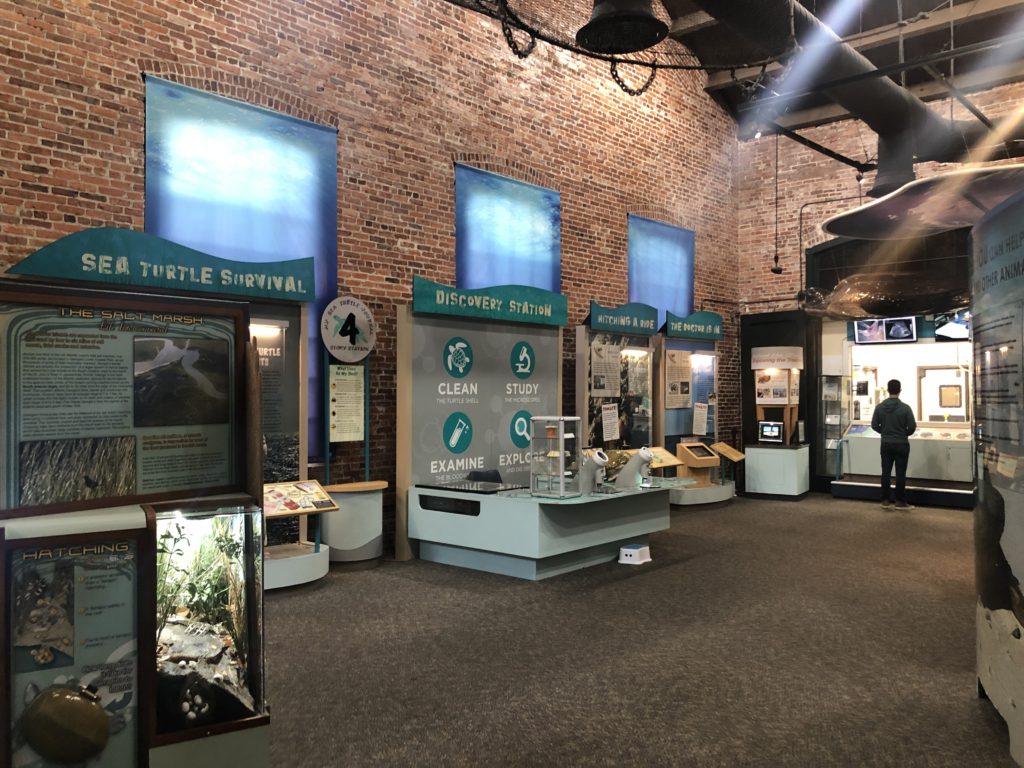
In the very back, a large window gave us a view of the Treatment Room. Not too much was happening on the hospital side when we visited. Honestly, we were thankful. It would have been interesting to see a procedure taking place, but I wasn’t sure my younger two would handle it well. The platform would have given them a really good look, too! (Then we would probably have had to have some difficult conversations!)
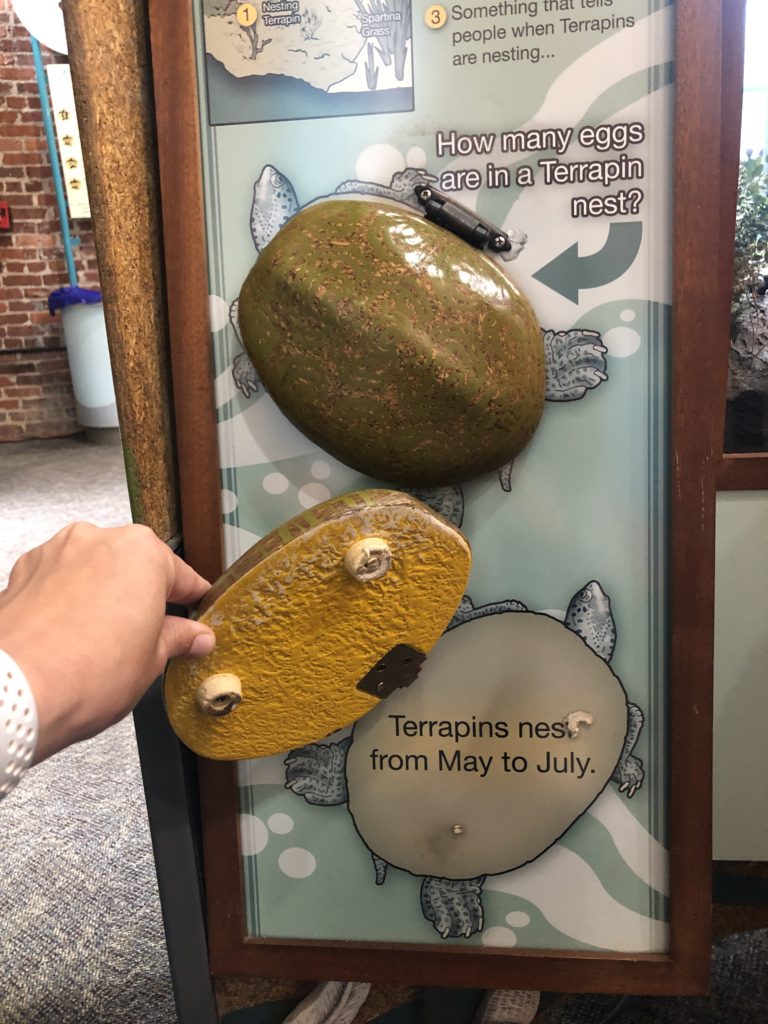
We spent most of our time at the Georgia Sea Turtle Center here in the Learning Center. There was so much to do!
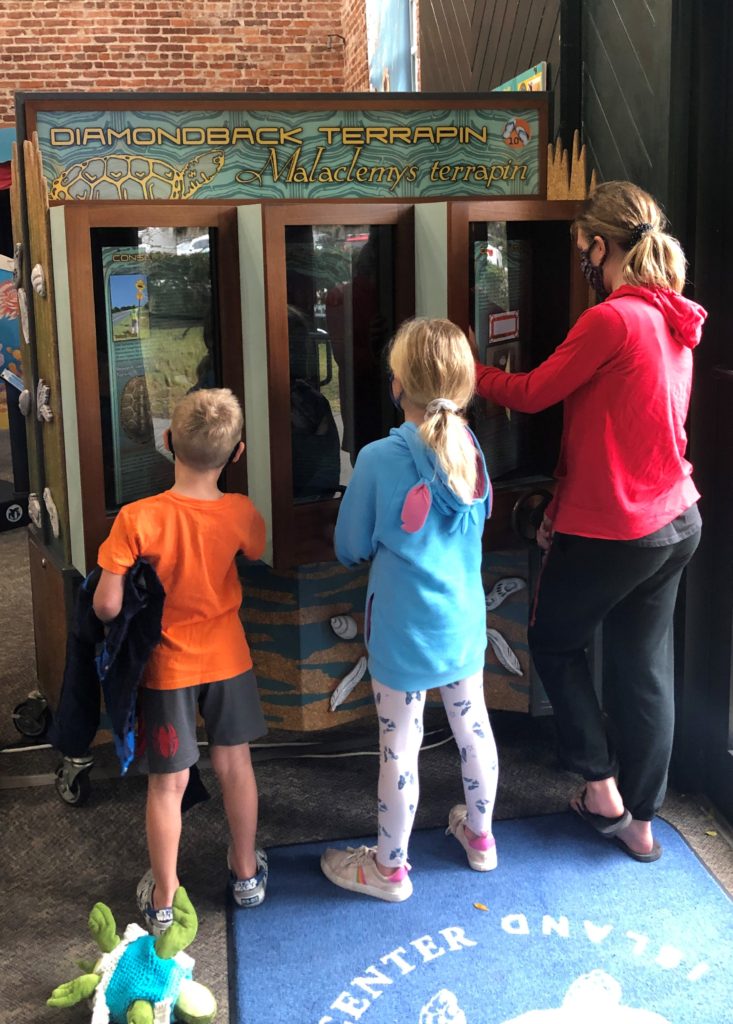
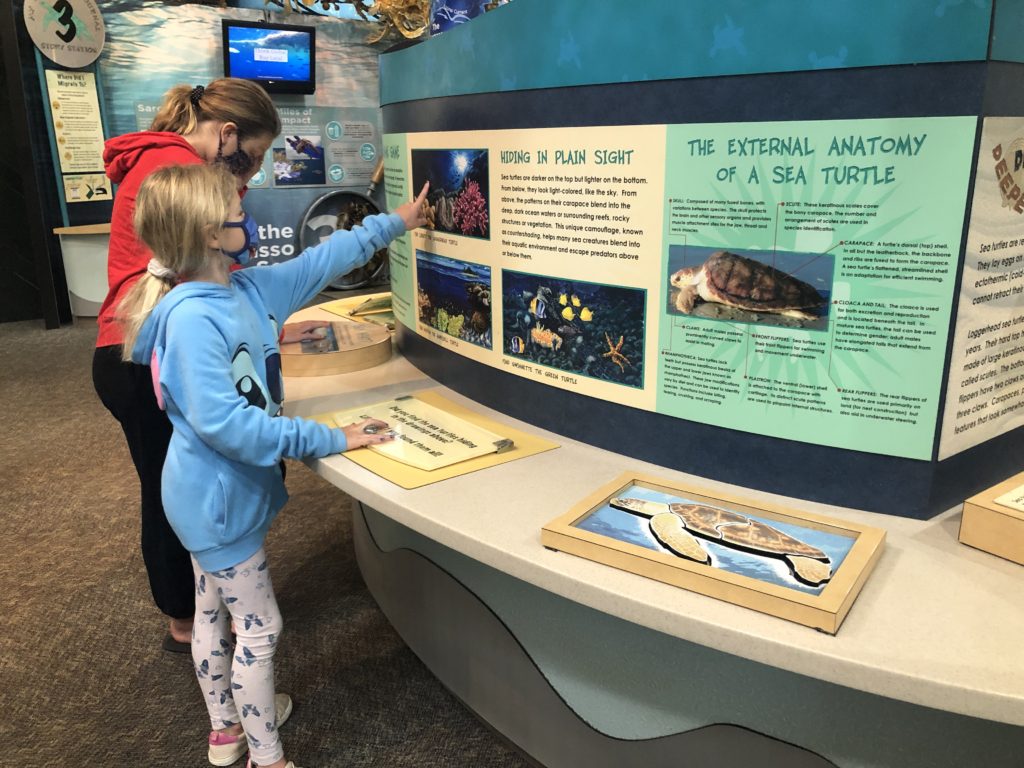
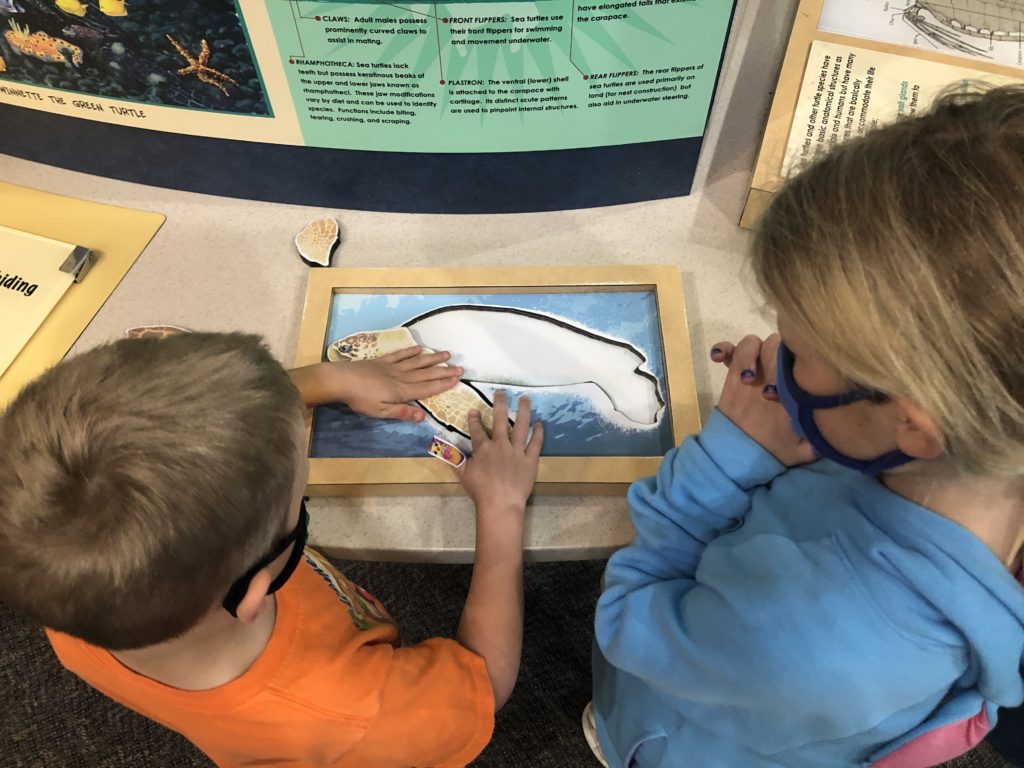
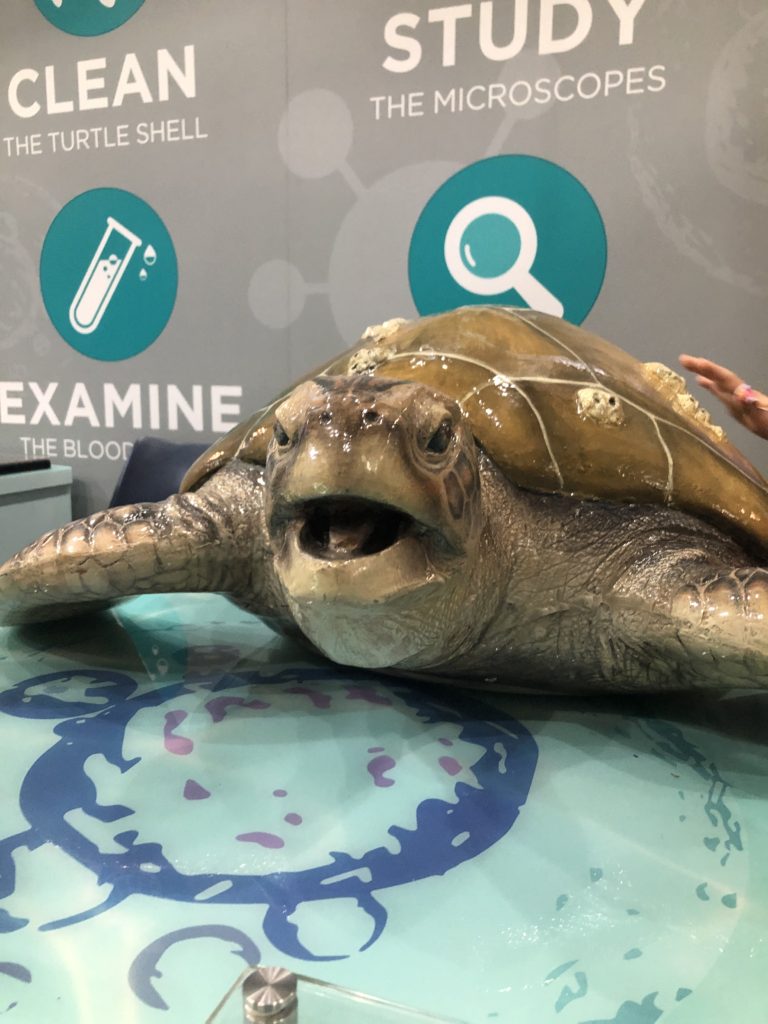
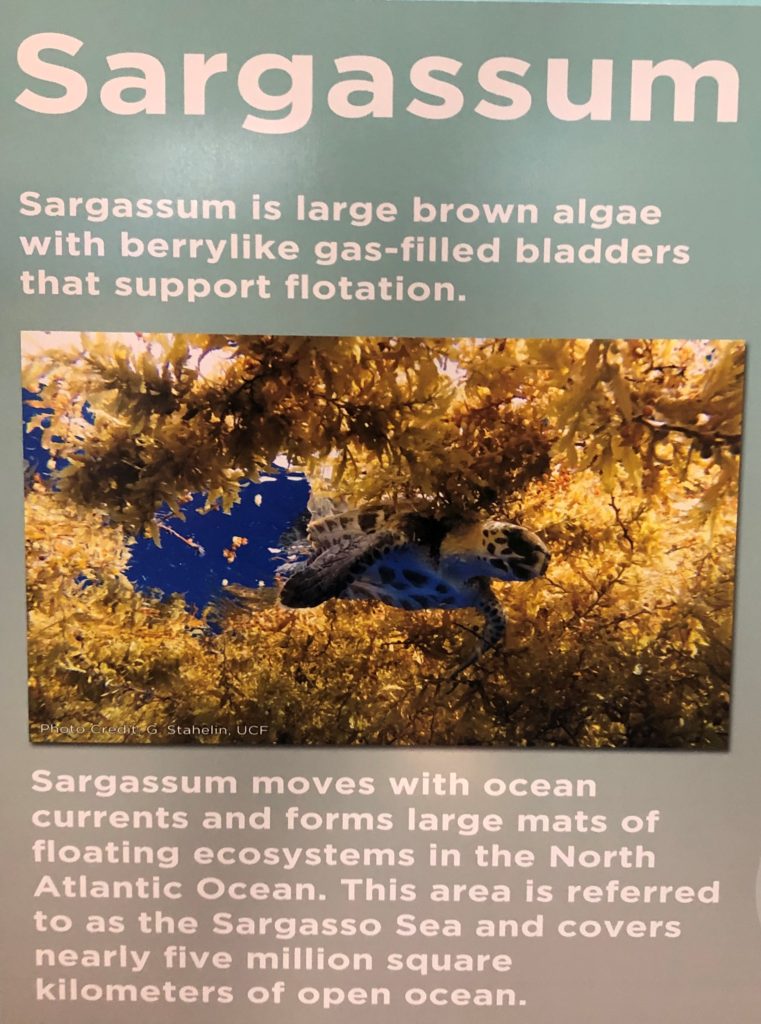
The Hospital Pavilion
As we exited the Learning Center, a short path passing an outdoor pond led us to the Hospital Pavilion. We looked for turtles here, but didn’t find any. It may have been too cold.
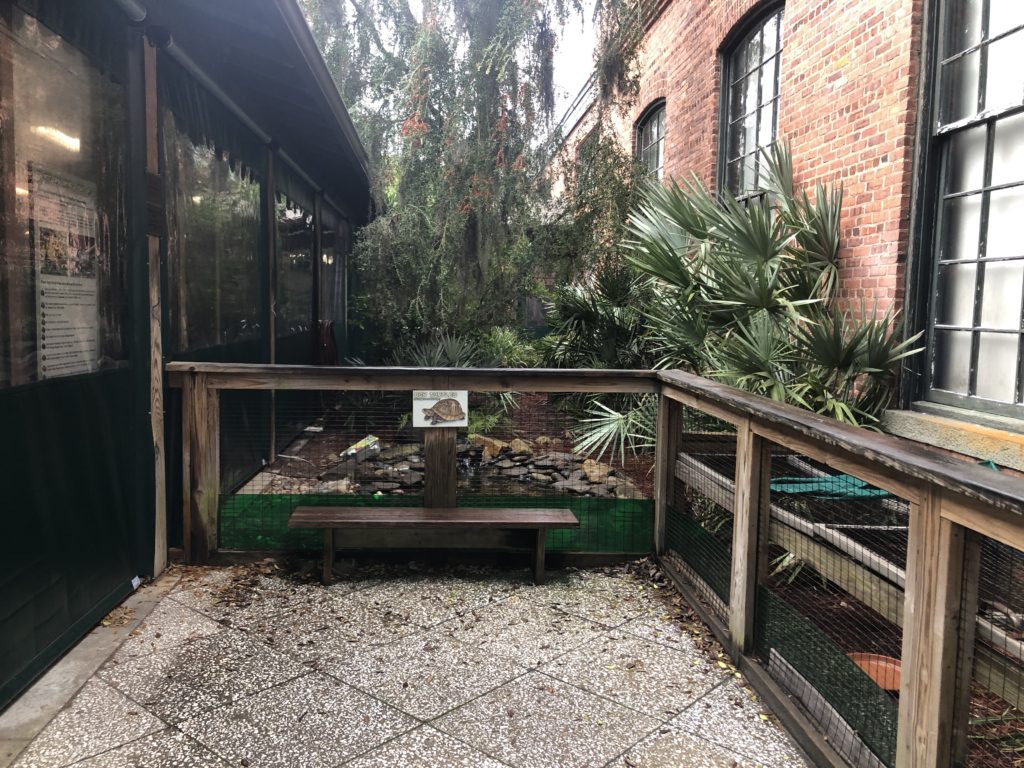
As we entered the Hospital Pavilion, we noticed a sign that indicated that over 600 sea turtles had been released by the Georgia Sea Turtle Center as of January 14, 2021. Once they are capable of surviving on their own, they are released back into the ocean with trackers. You can even view the location of the rehabilitated turtles online! This is one of the services supported by ticket sales and gift shop purchases.
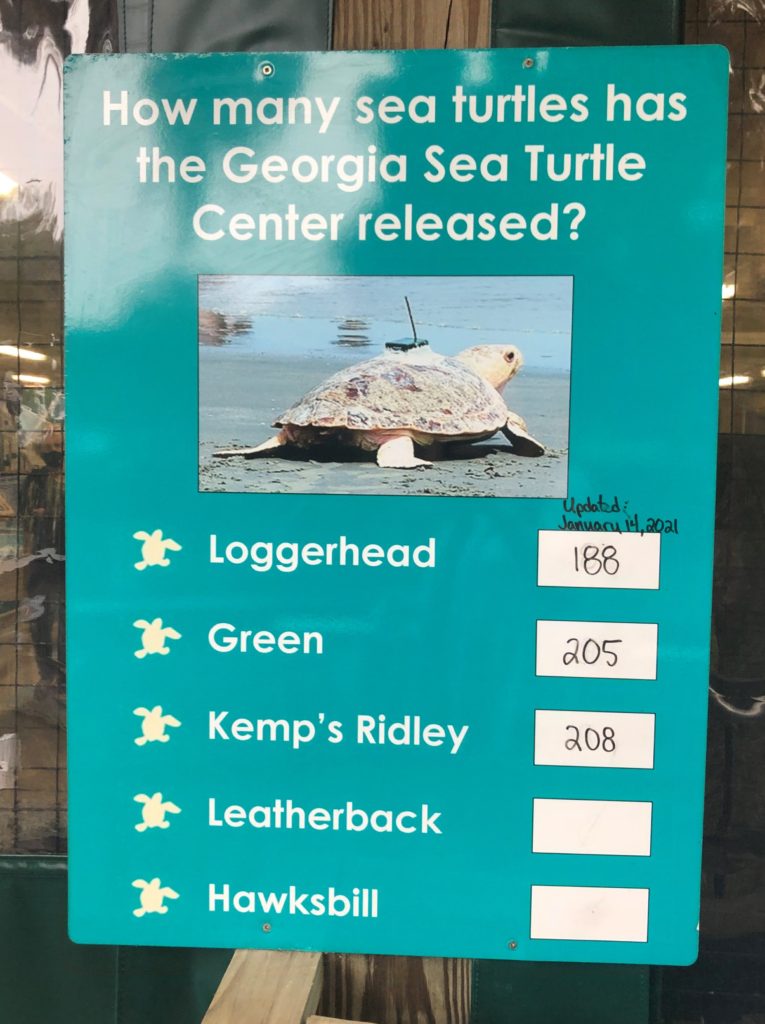
The Hospital Pavilion is a large tented building, sort of like a sea turtle barn. It’s filled with huge pools on either side of an elevated platform. Sea turtles rehab here, sometimes sharing a divided pool with other turtles.
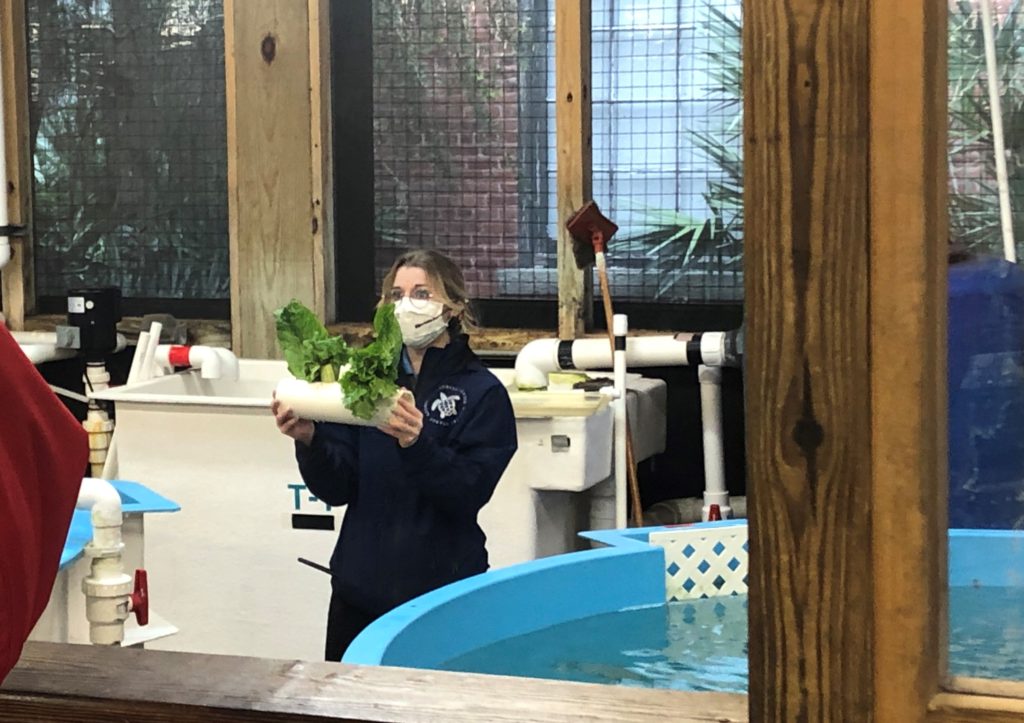
It was feeding time when we visited! Caregivers used pipes to hold leafy greens and dropped them in when the sea turtles aren’t looking. This process prevents the turtles from associating humans with food, a behavior that could be dangerous when they are released. Also, because the pipe sinks, the turtles have to dive reach the lettuce, just as they would in the ocean.
Sea turtles need rehabilitation for a variety of reasons and unfortunately nearly all are related to human activity. Some get tangled in fishing lines or traps intended for crabs and lobsters and end up with badly damaged flippers. Others have shell damage caused by collisions with boats or propellers. Intestinal impactions caused by discarded trash is also a common problem.
Large mirrors hung above the pools at an angle, enabling us to have a good look at the turtles inside. Patient sheets were provided for each turtle, providing its demographic information and explaining its injuries.
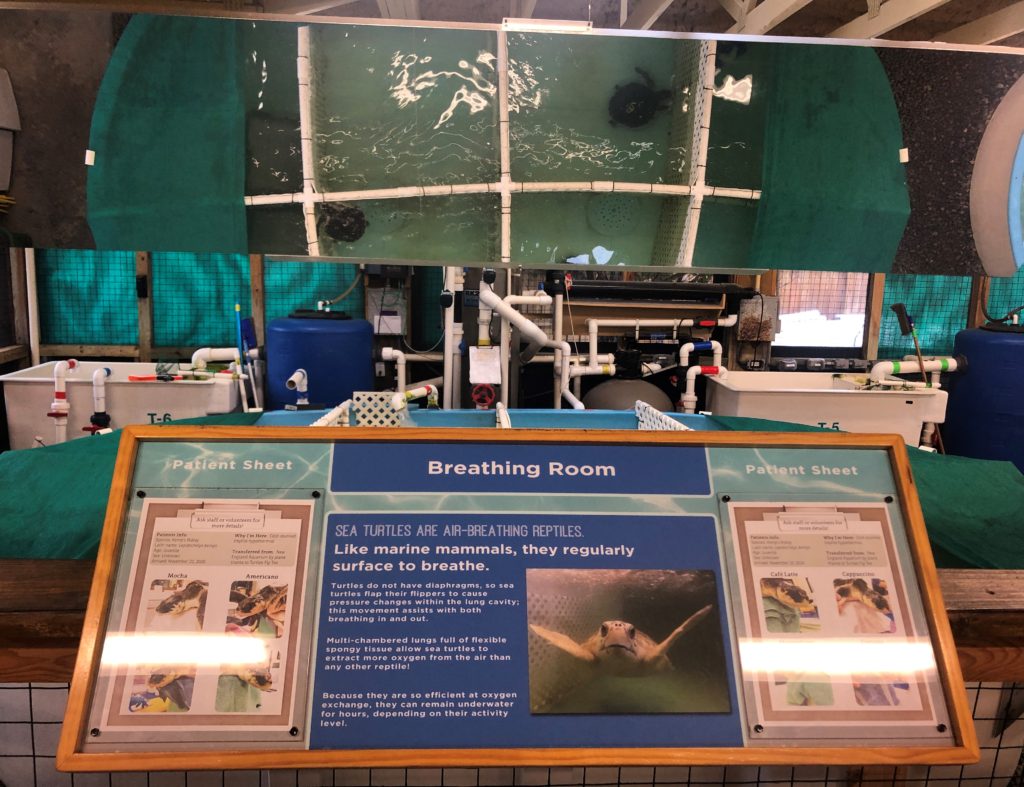
The turtles in this tank had been cold-stunned, the reptile equivalent of hypothermia. Luckily they were rescued and will be allowed to fully recover before they are tagged and released.
When it comes to injuries, a sea turtle can be rehabilitated to survive in the wild as long as it still has two fins, one on each side of its body. We also saw one turtle whose shell had been damaged by a propeller. It only had three fins, but we learned that the lost fin was an old injury, probably from a shark! It had already healed successfully.
The Verdict
We had a wonderful time at the Georgia Sea Turtle Center and would recommend it to anyone. It was fun, it was informative, and the turtles were too cute! We will definitely visit again.
Plan Your Visit
Georgia Sea Turtle Center
214 Stable Road
Jekyll Island, Georgia 31527
website






35 Comments
Maggie Jarratt
This looks really cool! Thanks for sharing.
Holly
Thanks for commenting! We had a great time.
Megan
My daughter loves anything that involves sea turtles! This would be the perfect place to get some fun education!
Holly
Absolutely! My son has a sea turtle stuffie. It’s his favorite and he loved the center.
Katharine
Will have to take our grandkids here on our next visit to Georgia! <3
Holly
For sure! You could easily make a day of exploring the island.
Barbara
Such interesting information about the sea turtles! They are fascinating to observe and learn about!
Holly
We definitely learned some tips. Now when my husband brushes his teeth, the kids tell him to “turn off the water and save some turtles!”
Holly B
Looks like you all had an amazing experience! What a great place to take the family for a beautiful vacation!
Holly
Thank you! We really loved it.
lisa Manderino
This looks like a fun place to see the sea turtles! I hope we get to visit one day!
Holly
It’s an easy pit stop if you’re on I-95! I hope you get there one day, too.
Keirsten
I love that they’re a rehabilitation centre 🙌 Turtles are such wonderful creatures and cute indeed 🐢💜
Holly
It was so sad to see them in various stages of rehabilitation, but I’m grateful the center exists!
Ann Gaulin
We visit every year. I especially like the window where they give the turtles their treatment.
Holly
Fantastic! Do you live close by?
Tiffany Smith
I need to visit this place! I have a friend that loves turtles 🙂
Holly
Your friend would be in heaven! 🙂
Marianne
What a cool looking place to visit! My kids would definitely like to go here, if we ever make it back to Georgia!
Holly
It’s worth a detour!
Gina
This looks like it would be really fun, sea turtles are so interesting! Thanks for the fun review!
Holly
Thanks! We had a blast!
Sydney Delong-Eat Simply Sweet
How fun! I bet my son would love this!
Holly
For sure! I hope you make it out.
Alice
Thank for the tour of this care center for sea turtles. Sounds like the turtles are getting excellent care.
Maria Gustafsson
I think I would enjoy it just as much!
Holly
It was a bit magical!
Kristin
What wonderful work they are doing! We just checked out a book at the library on sea turtles. I will share this post with my daughter. 🙂
Holly
Yes, plus admission fees and gift shop purchases help!
Sabrina DeWalt
We once visited the aquarium in Virginia Beach when they had sea turtles rehabbing. It is fascinating to think these animals can be healed and released back into the wild with such success.
Holly
That’s a great aquarium! We’ve visited many times and enjoy being able to pet the stingrays and walk out on the marshes.
Tiffany
Turtles are so amazing! This looks like a great place to visit!
Danielle Ardizzone
One of my twin girls is obsessed with turtles – she would love this!
Carolyn
We love sea turtles! It sounds like this facility does a great job of educating people about not only turtles, but ways to prevent harming the turtles, too.
Cindy Moore
I’d love to visit Jekyll Island and see the sea turtles!